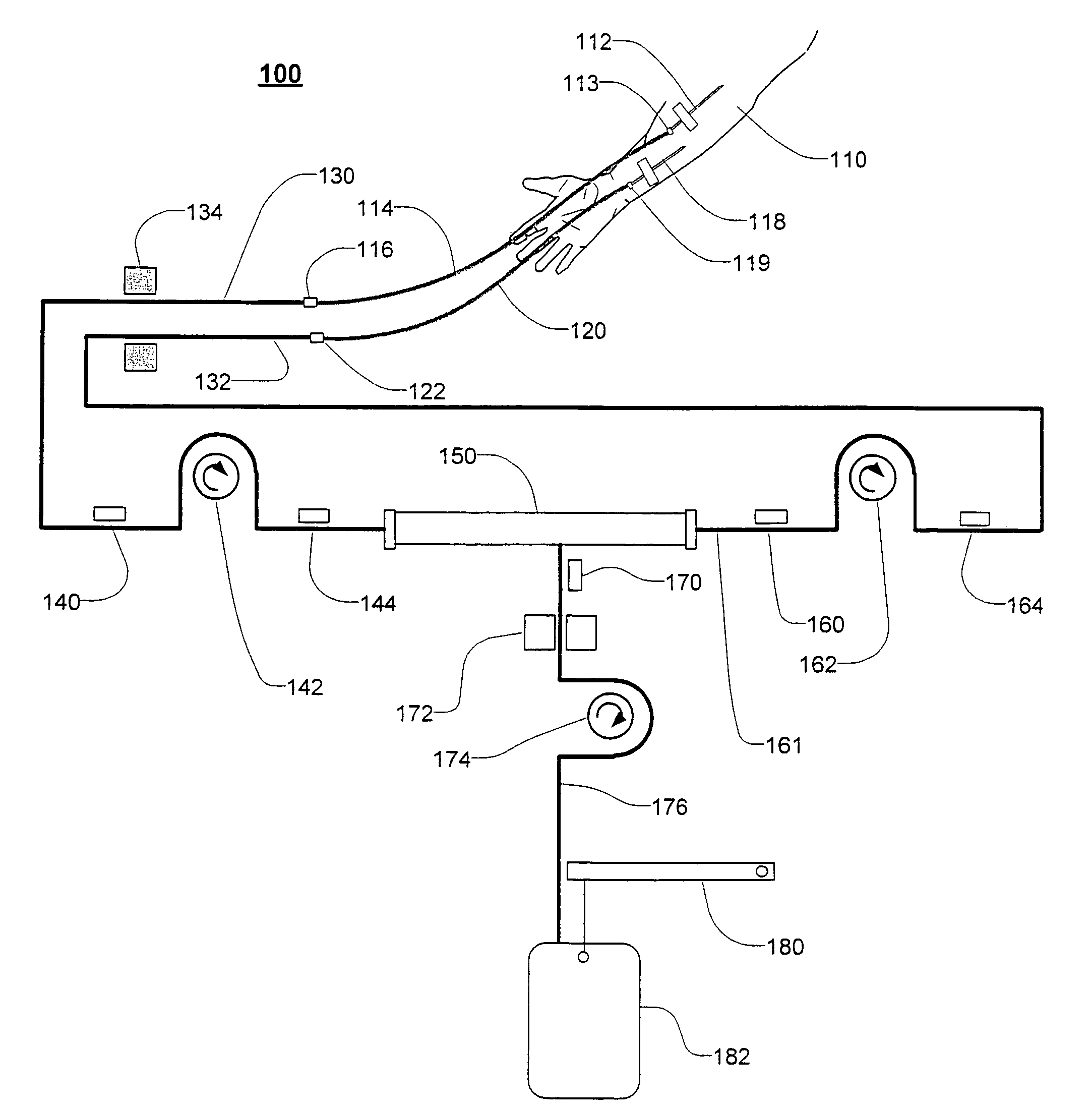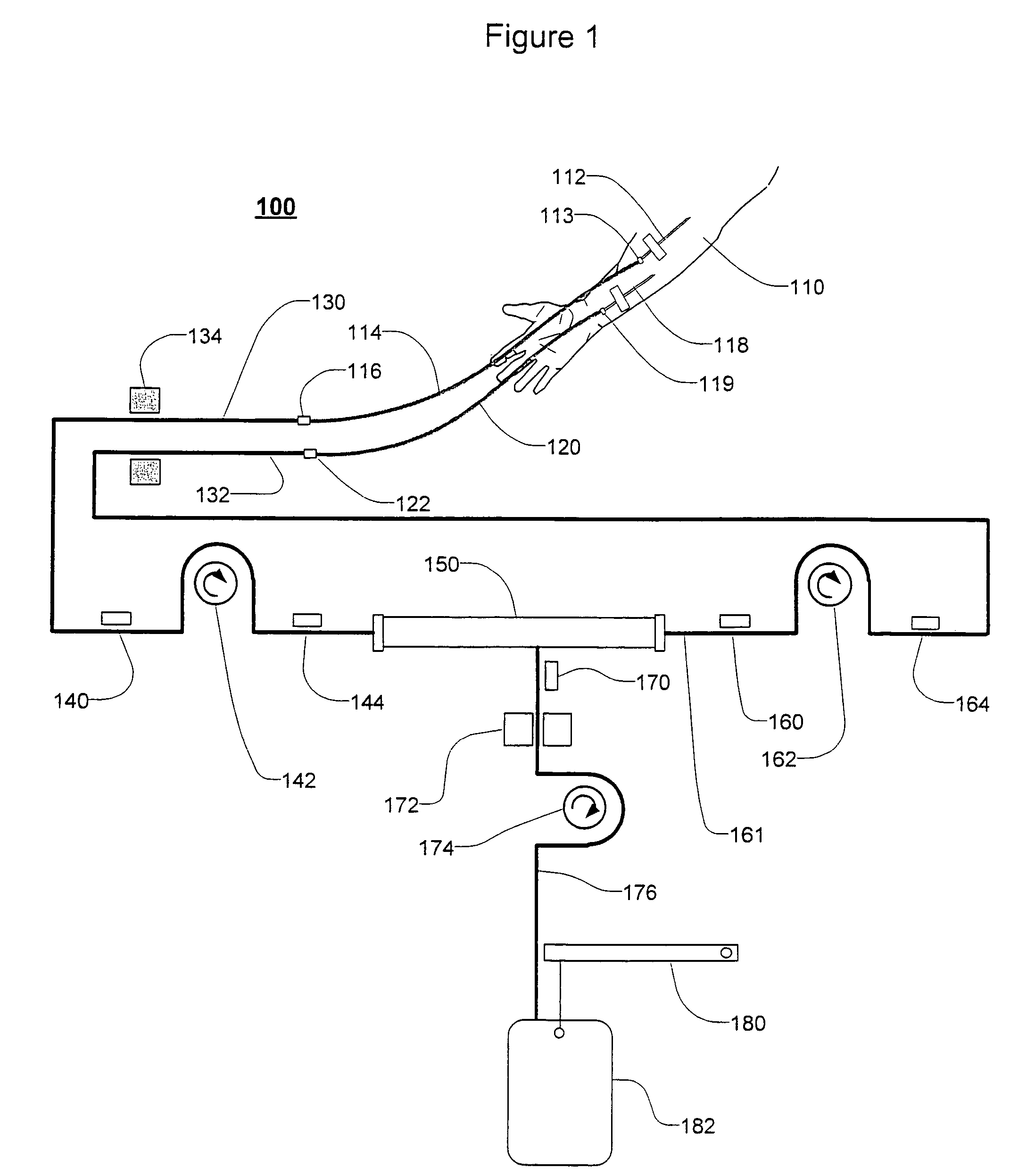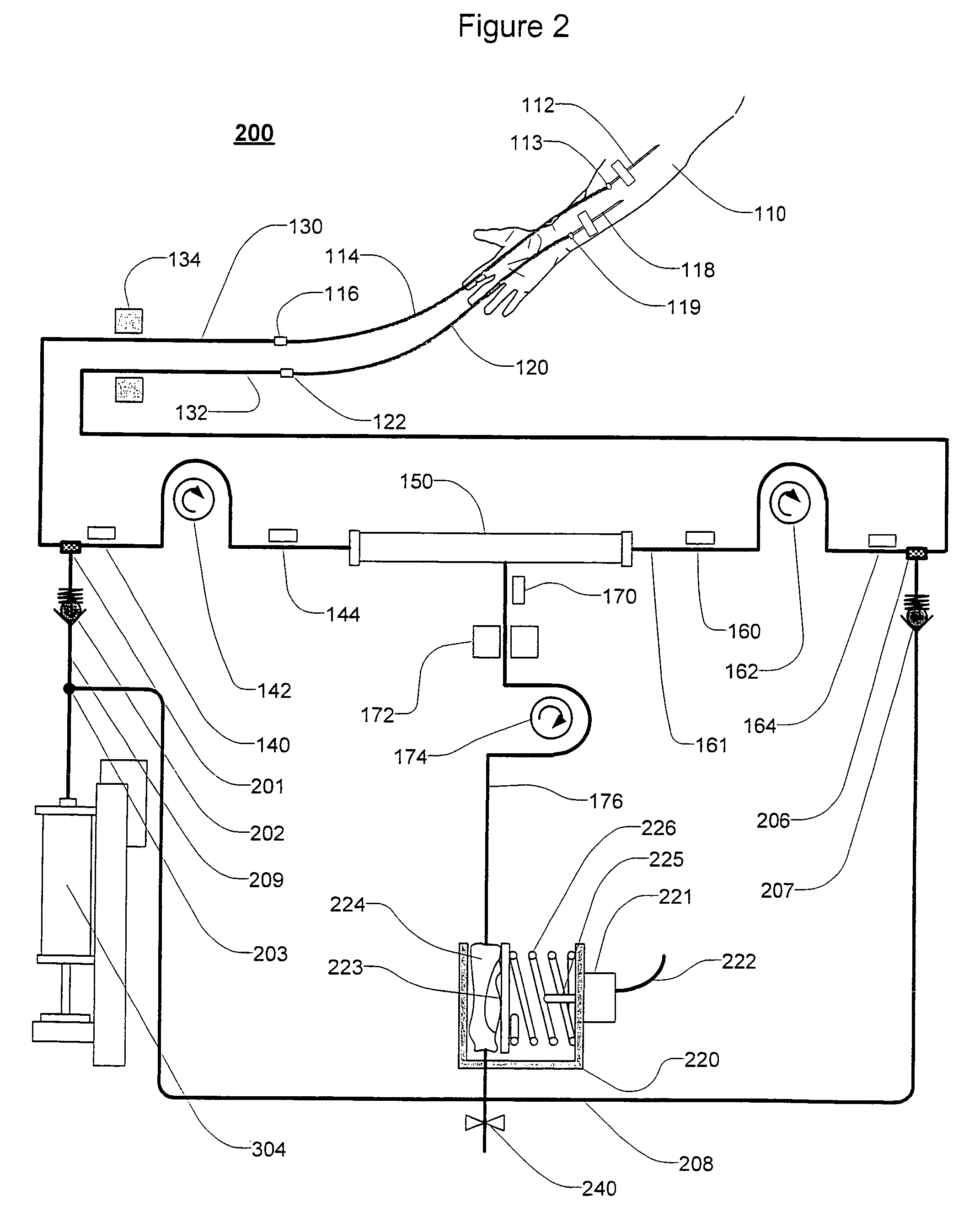Extracorporeal blood treatment and system having reversible blood pumps
a technology of peristalic pump and extracorporeal blood, which is applied in the direction of solvent extraction, other blood circulation devices, separation processes, etc., can solve the problem that patients could bleed to death in a relatively short period of time, and achieve the effect of volume removal of ultrafiltra
- Summary
- Abstract
- Description
- Claims
- Application Information
AI Technical Summary
Benefits of technology
Problems solved by technology
Method used
Image
Examples
Embodiment Construction
[0036]FIG. 1 shows a schematic of the ultrafiltration system 100. Withdrawal access 112 and infusion access 118 are obtained to and from the vascular system of the patient 110. Peripheral access via standard IV access methods is acceptable for use with this device. This is an advantage of the device described herein, but not a limiting requirement. The device will function just as effectively with other higher flow access methods such as a fistula, central venous catheter, implanted port, midline or PICC.
[0037]If required, withdrawal extension 114 connects proximally to withdrawal access via connectors 113, and distally to withdrawal tubing 130 via connectors 116. If required, infusion extension 120 connects proximally to infusion access via connectors 119, and distally to infusion tubing 132 via connectors 122. If extensions 114, 120 are not required, the withdrawal tubing may connect directly to withdrawal access and infusion tubing directly to infusion access. The extensions are ...
PUM
 Login to View More
Login to View More Abstract
Description
Claims
Application Information
 Login to View More
Login to View More - R&D
- Intellectual Property
- Life Sciences
- Materials
- Tech Scout
- Unparalleled Data Quality
- Higher Quality Content
- 60% Fewer Hallucinations
Browse by: Latest US Patents, China's latest patents, Technical Efficacy Thesaurus, Application Domain, Technology Topic, Popular Technical Reports.
© 2025 PatSnap. All rights reserved.Legal|Privacy policy|Modern Slavery Act Transparency Statement|Sitemap|About US| Contact US: help@patsnap.com



